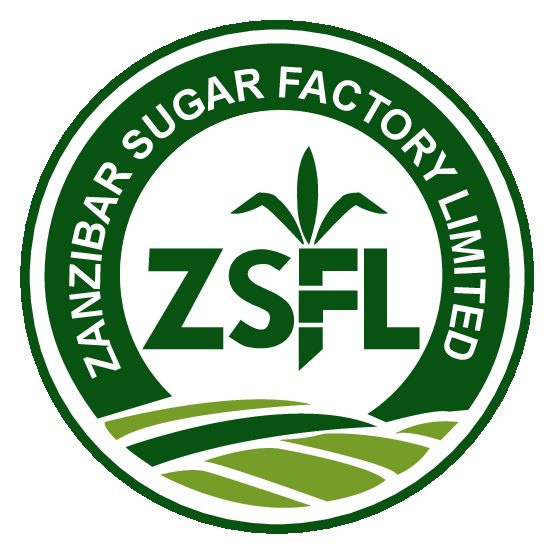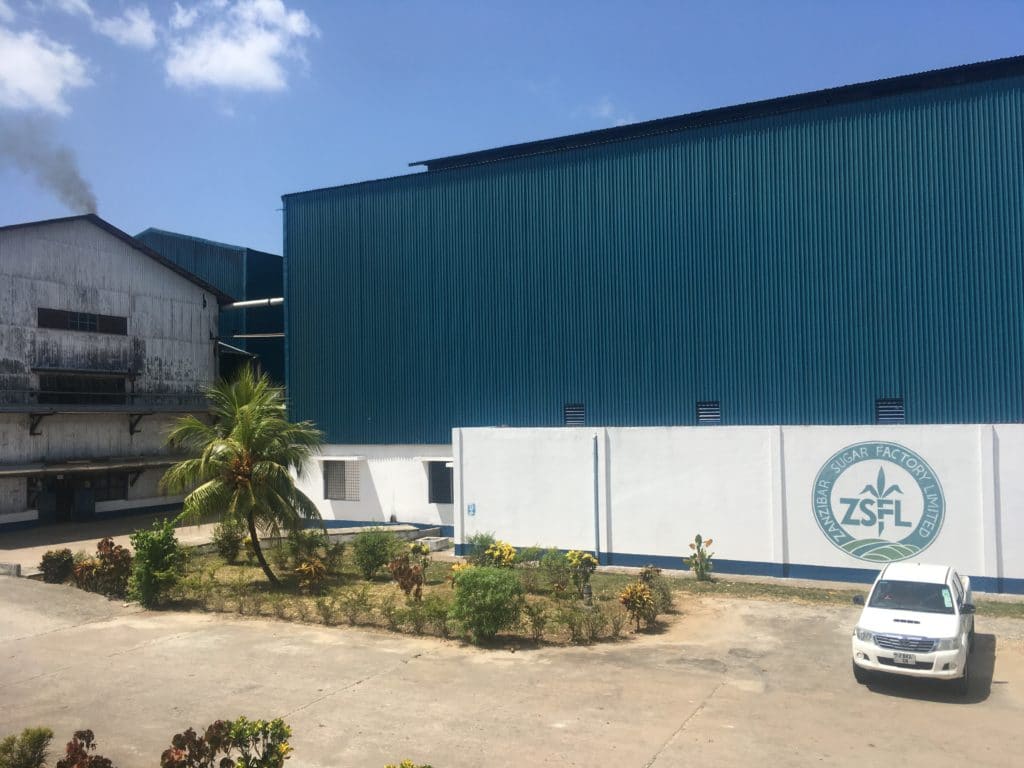
Zanzibar a sugar-producing island? It’s happening already!
Almost singlehandedly Rahim M. Bhaloo resurrected the ailing sugar industry in Zanzibar. He now produces 8,500 tons of the “white gold” per year – and could do much more.
It’s 11 o’clock in the morning and all machinery running smoothly when we enter the sugar cane mill in Mahonda. Huge processing buildings in white and blue stand out against a greyish sky on the property. Inside the factory halls, a labyrinth of colourfully painted machinery awaits us: yellow, red and light green pipes, centrifuges, fennels, boilers and transport belts – everything needed to process bulky sugar cane sticks into the finest brown natural sugar. When Rahim M. Bhaloo, a well-reputed Zanzibar-born entrepreneur, known to most as the owner of Multi-Color Printers in Mtoni, took over as the Resident Director of the island’s only existing sugar factory two and a half years ago, the “Zanzibar Sugar Factory Ltd.” (ZSFL) was ailing. “Now we see a lot of prospects”, 49-year-old Bhaloo says.
The sugar factory in itself is a sweet promise. It stands for the possible divergence of the Zanzibar economy - from a mono-cultural tourism hub to a diversified economy.
Today, ZSFL employs almost 700 workers on the factory site and in the sugar cane fields in the north of Zanzibar. “If the sugar industry here were to be fully established and sugar cane considered a strategic crop like in many other countries, we could create jobs for 10,000 people”, the resident director forecasts. For now, managers from India, the second-largest sugar producer in the world after Brazil, are training local staff in ZSFL Mahonda. With sugar cane being regarded one of the most significant and efficient sources of biomass for biofuel production, the entire sugar factory runs on its own generated energy – no external electricity is required at the time of production. “At full capacity we could contribute as much as seven megawatt into the local grid”, Bhaloo says.
Caramel smell in the air
The caramellish smell of molasses lingers in the air. “A sugar factory does not only produce sugar”, Bhaloo explains to me, “molasses, biomass energy, alcoholic spirits and barges are by-products.“ Molasses can be used as cow food. “In Brazil, the spirit production is sometimes a larger business than the sugar itself”, the director adds with a smile.
A huge, naïve painting decorates the humble boardroom of the mill, telling the story of its origins: In 1972 Zanzibar’s first president Abeid Amani Karume invited the Chinese to built the factory. By 1977 it was running well. By 1982 it had collapsed and remained closed until 2003 when Indian businessman Mahesh Patel, a specialist in agro-farming, together with managing director Vicky Patel took to the challenge of reviving it. So far, the investor who became the chairman of ZSFL has channelled more than 40 million dollar into the sugar business on the island.
Step by step local the local production was brought back to life, from 185 tons in 2015 to 8,500 tons in 2019, before the onset of the corona pandemic. “We have recently more than doubled our daily production capacity”, says Rahim Bhaloo, “but we could actually produce much more.” The problem: “We lack land to grow sugar cane. We were promised double the land we are cultivating now. We have high hopes on the new government.” Only with more farming land, the factory – still writing red figures – could eventually run sustainably.
The sugar belt of Zanzibar
It’s a lush, green paradise. The bamboo-like sugar cane crop with its green leafs stands tall in Zanzibar’s “feeding basket” zone of Upenja all the way to Kilombero and Bambi, right in the middle of the island. Around 3,300 acres of sugarcane are in use, the cane is harvested twice per year; another 500 acres are cultivated by 800 farming families, trained and technically supported by ZSFL better known as “outgrowers” within the industry. The equation is straightforward: “To fulfill the local demand of Zanzibar (see box), “three to four times as much sugar cane should be planted here”, director Bhaloo says. “Then we would no longer rely on imports from Brazil or any other country”. Increased production would lower the price, too. In Zanzibar, at the moment, to process a ton of sugar costs $750; on the international market it’s $350-$400.
Not everything is sweet about sugar. A lot of processed food such as ketchup, pizza, even juices and yoghurts contains hidden sugar, which in the long run is causing obesity and diabetes. Nutritionists recommend no more than 25-50 grams sugar intake per day.
More jobs for the island
While we walk alongside the green field near Kiwengwa, Bhaloo, wearing a blue jeans and plaid cowboy shirt, says: “I am sure we can create many more jobs for Zanzibar.” Back in the factory, I watch the huge machinery first swallowing the sugar cane rots, washing the sticks and extracting the juice. By heating up the syrup it crystallises and from a centrifuge above our heads it suddenly starts “raining sugar”. A transport belt brings the light-brown, high-quality organic sweetener into wooden basins from where it is dried and packed. In a vast airy storage hall, a big number of ready-to-go 50 kilograms sacks are already nearly stacked up, waiting for delivery to retail companies.
The factory’s general manager Rajesh Kumar Dodla, 50, carefully watches the entire process. And before we say good-bye, Rahim Bhaloo sums it all up: “The white gold, as sugar is sometimes called, has yet to be fully discovered, explored and utilised in Zanzibar.”

